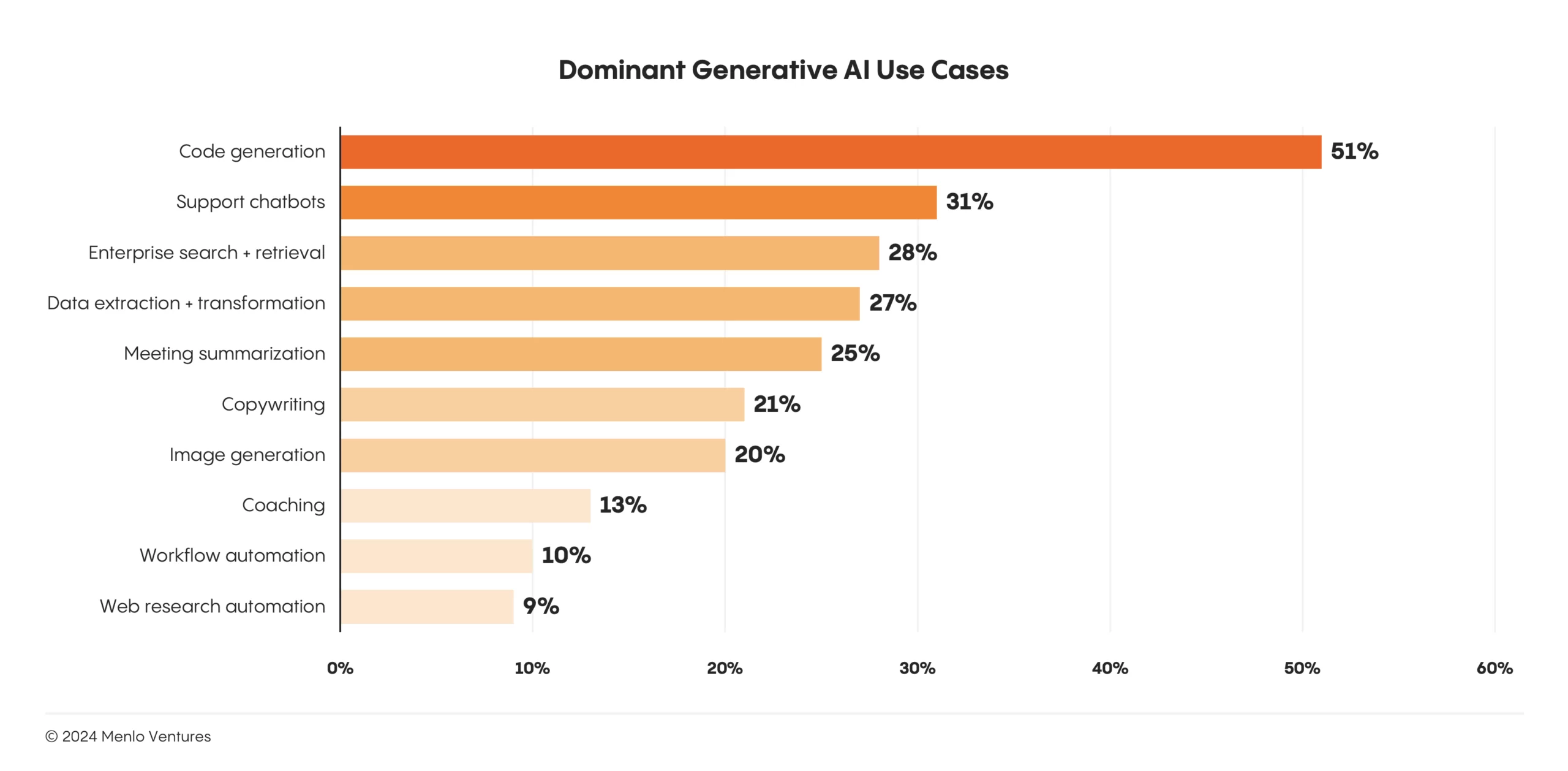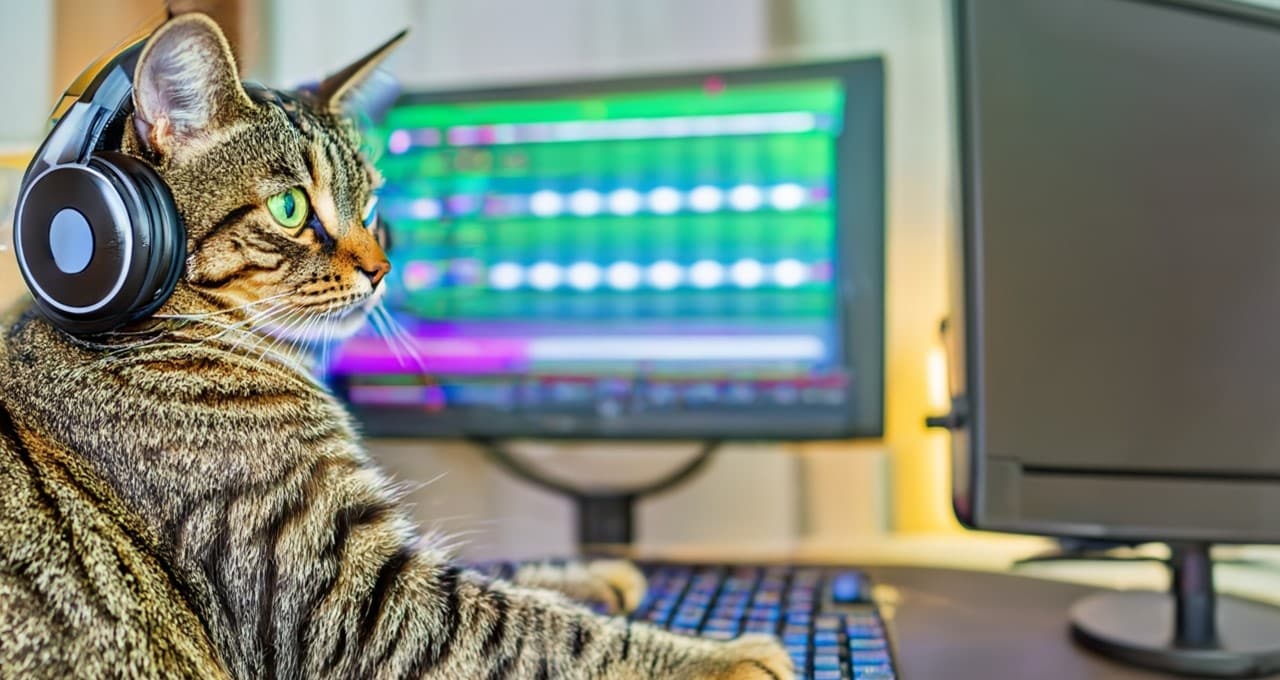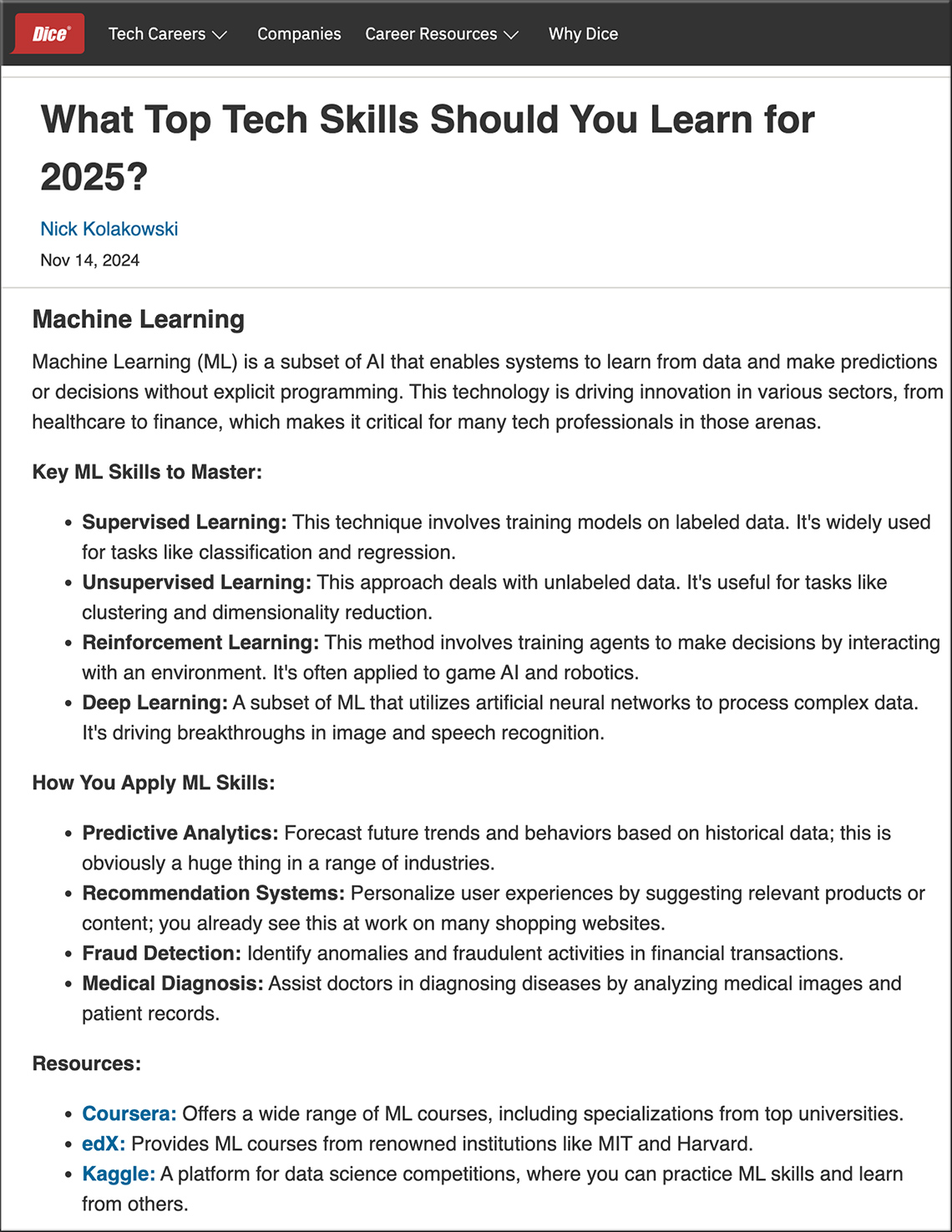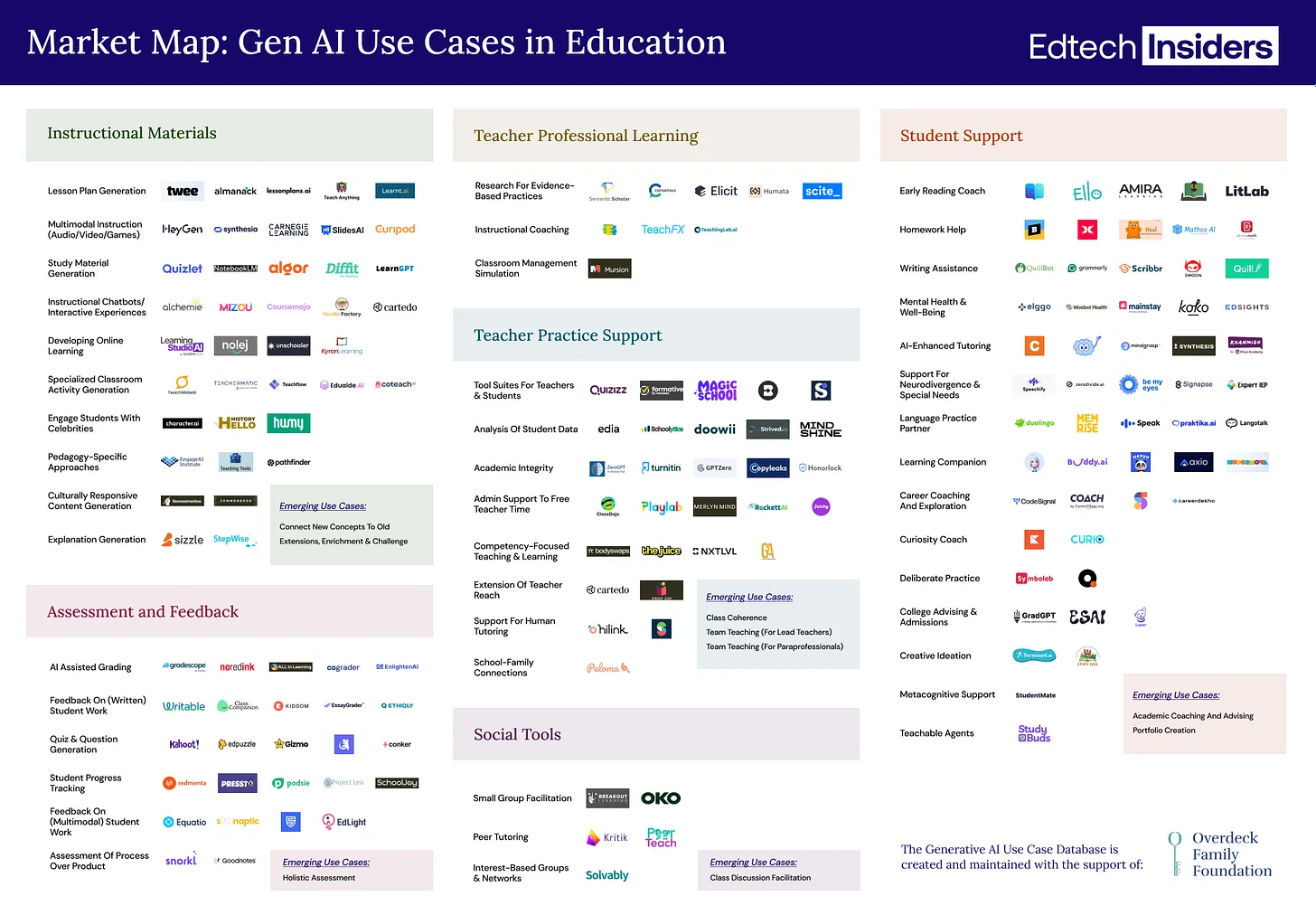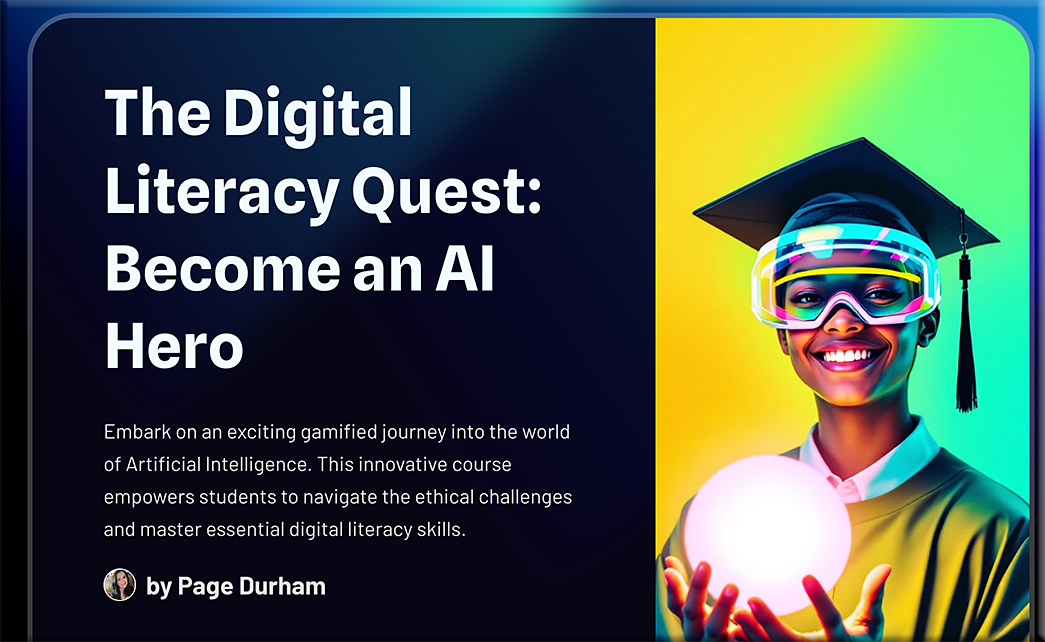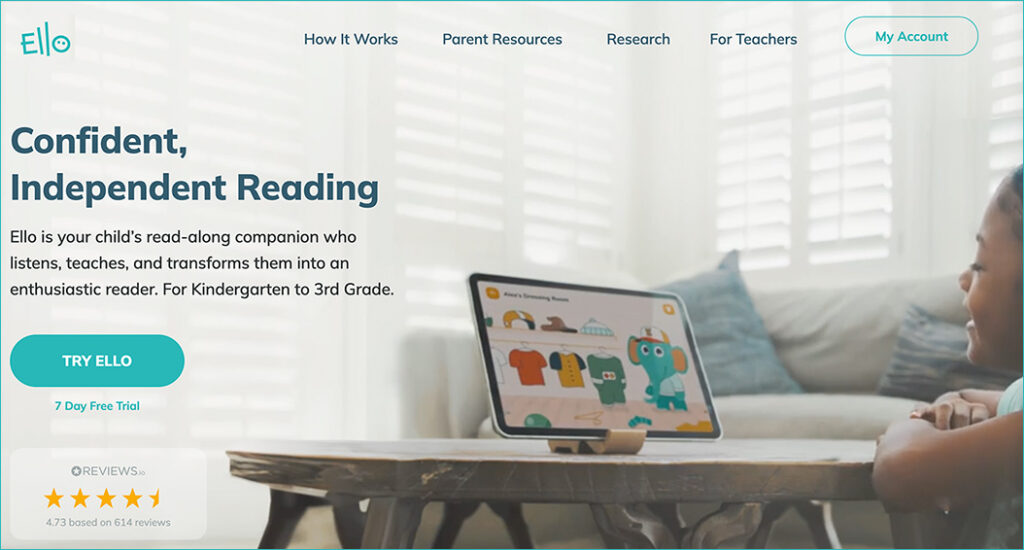From DSC:
Notebook LM continues to make waves…
2024: The State of Generative AI in the Enterprise — from menlovc.com (Menlo Ventures)
The enterprise AI landscape is being rewritten in real time. As pilots give way to production, we surveyed 600 U.S. enterprise IT decision-makers to reveal the emerging winners and losers.
This spike in spending reflects a wave of organizational optimism; 72% of decision-makers anticipate broader adoption of generative AI tools in the near future. This confidence isn’t just speculative—generative AI tools are already deeply embedded in the daily work of professionals, from programmers to healthcare providers.
Despite this positive outlook and increasing investment, many decision-makers are still figuring out what will and won’t work for their businesses. More than a third of our survey respondents do not have a clear vision for how generative AI will be implemented across their organizations. This doesn’t mean they’re investing without direction; it simply underscores that we’re still in the early stages of a large-scale transformation. Enterprise leaders are just beginning to grasp the profound impact generative AI will have on their organizations.
Business spending on AI surged 500% this year to $13.8 billion, says Menlo Ventures — from cnbc.com by Hayden Field
Key Points
- Business spending on generative AI surged 500% this year, hitting $13.8 billion — up from just $2.3 billion in 2023, according to data from Menlo Ventures released Wednesday.
- OpenAI ceded market share in enterprise AI, declining from 50% to 34%, per the report.
- Amazon-backed Anthropic doubled its market share from 12% to 24%.
Microsoft quietly assembles the largest AI agent ecosystem—and no one else is close — from venturebeat.com by Matt Marshall
Microsoft has quietly built the largest enterprise AI agent ecosystem, with over 100,000 organizations creating or editing AI agents through its Copilot Studio since launch – a milestone that positions the company ahead in one of enterprise tech’s most closely watched and exciting segments.
…
The rapid adoption comes as Microsoft significantly expands its agent capabilities. At its Ignite conference [that started on 11/19/24], the company announced it will allow enterprises to use any of the 1,800 large language models (LLMs) in the Azure catalog within these agents – a significant move beyond its exclusive reliance on OpenAI’s models. The company also unveiled autonomous agents that can work independently, detecting events and orchestrating complex workflows with minimal human oversight.
Now Hear This: World’s Most Flexible Sound Machine Debuts — from
Using text and audio as inputs, a new generative AI model from NVIDIA can create any combination of music, voices and sounds.
Along these lines, also see:
- Nvidia unveils AI model for music, audio that can modify voices, generate new sounds — from seekingalpha.com
AI Agents Versus Human Agency: 4 Ways To Navigate Our AI-Driven World — from forbes.com by Cornelia C. Walther
To understand the implications of AI agents, it’s useful to clarify the distinctions between AI, generative AI, and AI agents and explore the opportunities and risks they present to our autonomy, relationships, and decision-making.
…
AI Agents: These are specialized applications of AI designed to perform tasks or simulate interactions. AI agents can be categorized into:
-
- Tool Agents…
- Simulation Agents..
While generative AI creates outputs from prompts, AI agents use AI to act with intention, whether to assist (tool agents) or emulate (simulation agents). The latter’s ability to mirror human thought and action offers fascinating possibilities — and raises significant risks.
Skill-Based Training: Embrace the Benefits; Stay Wary of the Hype — from learningguild.com by Paige Yousey
1. Direct job relevance
One of the biggest draws of skill-based training is its direct relevance to employees’ daily roles. By focusing on teaching job-specific skills, this approach helps workers feel immediately empowered to apply what they learn, leading to a quick payoff for both the individual and the organization. Yet, while this tight focus is a major benefit, it’s important to consider some potential drawbacks that could arise from an overly narrow approach.
Be wary of:
- Overly Narrow Focus: Highly specialized training might leave employees with little room to apply their skills to broader challenges, limiting versatility and growth potential.
- Risk of Obsolescence: Skills can quickly become outdated, especially in fast-evolving industries. L&D leaders should aim for regular updates to maintain relevance.
- Neglect of Soft Skills: While technical skills are crucial, ignoring soft skills like communication and problem-solving may lead to a lack of balanced competency.
2. Enhanced job performance…
3. Addresses skill gaps…
…and several more areas to consider
Another item from Paige Yousey
5 Key EdTech Innovations to Watch — from learningguild.com by Paige Yousey
AI-driven course design
…
Strengths
- Content creation and updates: AI streamlines the creation of training materials by identifying resource gaps and generating tailored content, while also refreshing existing materials based on industry trends and employee feedback to maintain relevance.
- Data-driven insights: Use AI tools to provide valuable analytics to inform course development and instructional strategies, helping learner designers identify effective practices and improve overall learning outcomes.
- Efficiency: Automating repetitive tasks, such as learner assessments and administrative duties, enables L&D professionals to concentrate on developing impactful training programs and fostering learner engagement.
Concerns
- Limited understanding of context: AI may struggle to understand the specific educational context or the unique needs of diverse learner populations, potentially hindering effectiveness.
- Oversimplification of learning: AI may reduce complex educational concepts to simple metrics or algorithms, oversimplifying the learning process and neglecting deeper cognitive development.
- Resistance to change: Learning leaders may face resistance from staff who are skeptical about integrating AI into their training practices.
Also from the Learning Guild, see:
Use Twine to Easily Create Engaging, Immersive Scenario-Based Learning — from learningguild.com by Bill Brandon
Scenario-based learning immerses learners in realistic scenarios that mimic real-world challenges they might face in their roles. These learning experiences are highly relevant and relatable. SBL is active learning. Instead of passively consuming information, learners actively engage with the content by making decisions and solving problems within the scenario. This approach enhances critical thinking and decision-making skills.
SBL can be more effective when storytelling techniques create a narrative that guides learners through the scenario to maintain engagement and make the learning memorable. Learners receive immediate feedback on their decisions and learn from their mistakes. Reflection can deepen their understanding. Branching scenarios add simulated complex decision-making processes and show the outcome of various actions through interactive scenarios where learner choices lead to different outcomes.
Embrace the Future: Why L&D Leaders Should Prioritize AI Digital Literacy — from learningguild.com by Dr. Erica McCaig
The role of L&D leaders in AI digital literacy
For L&D leaders, developing AI digital literacy within an organization requires a well-structured curriculum and development plan that equips employees with the knowledge, skills, and ethical grounding needed to thrive in an AI-augmented workplace. This curriculum should encompass a range of competencies that enhance technical understanding and foster a mindset ready for innovation and responsible use of AI. Key areas to focus on include:
- Understanding AI Fundamentals: …
- Proficiency with AI Tools: …
- Ethical Considerations: …
- Cultivating Critical Thinking: …
VR training aims to help doctors avoid bias — from inavateonthenet.net
A new virtual reality training programme aims to tackle biases in healthcare settings, aimed at improving recognition, understanding, and addressing implicit bias towards black mothers.
Participants in the program at the University of Illinois Urbana-Champaign underwent a series of three modules, with the first module focusing on implicit bias and how it can negatively affect a patient at a doctor’s appointment.
From DSC:
First of all, when you look at the following posting:
What Top Tech Skills Should You Learn for 2025? — from dice.com by Nick Kolakowski
…you will see that they outline which skills you should consider mastering in 2025 if you want to stay on top of the latest career opportunities. They then list more information about the skills, how you apply the skills, and WHERE to get those skills.
I assert that in the future, people will be able to see this information on a 24x7x365 basis.
- Which jobs are in demand?
- What skills do I need to do those jobs?
- WHERE do I get/develop those skills?
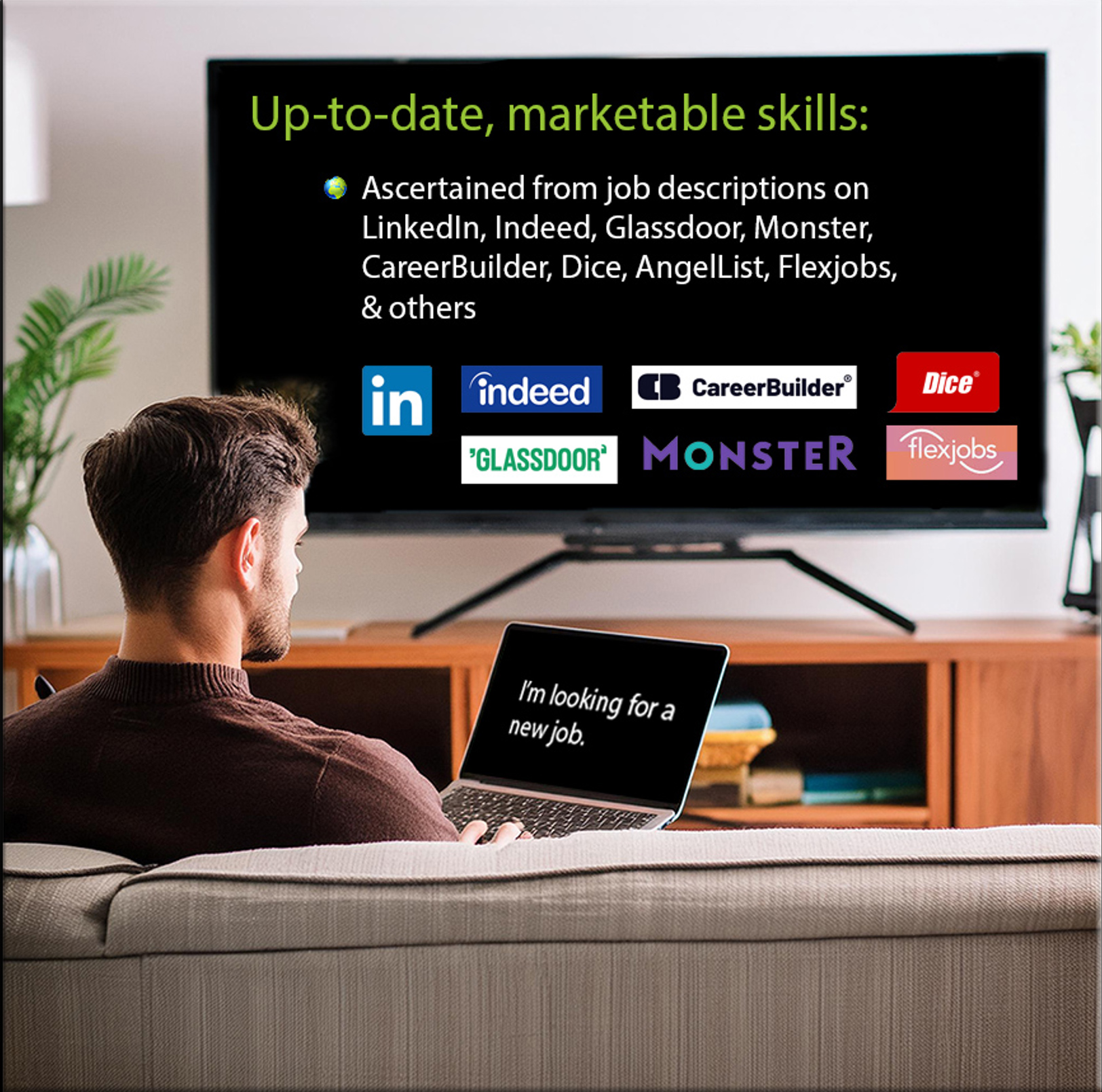

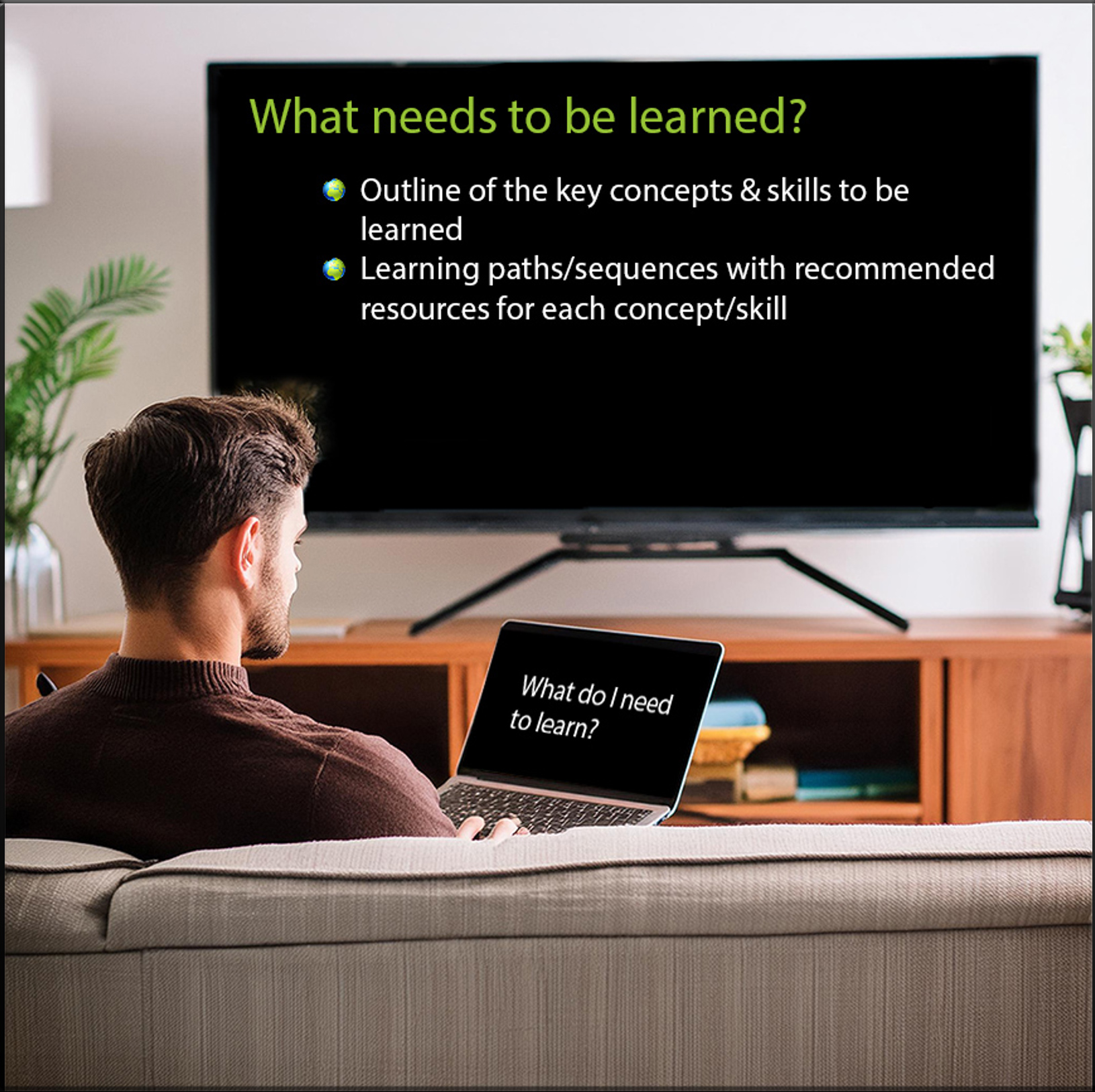
And that last part (about the WHERE do I develop those skills) will pull from many different institutions, people, companies, etc.
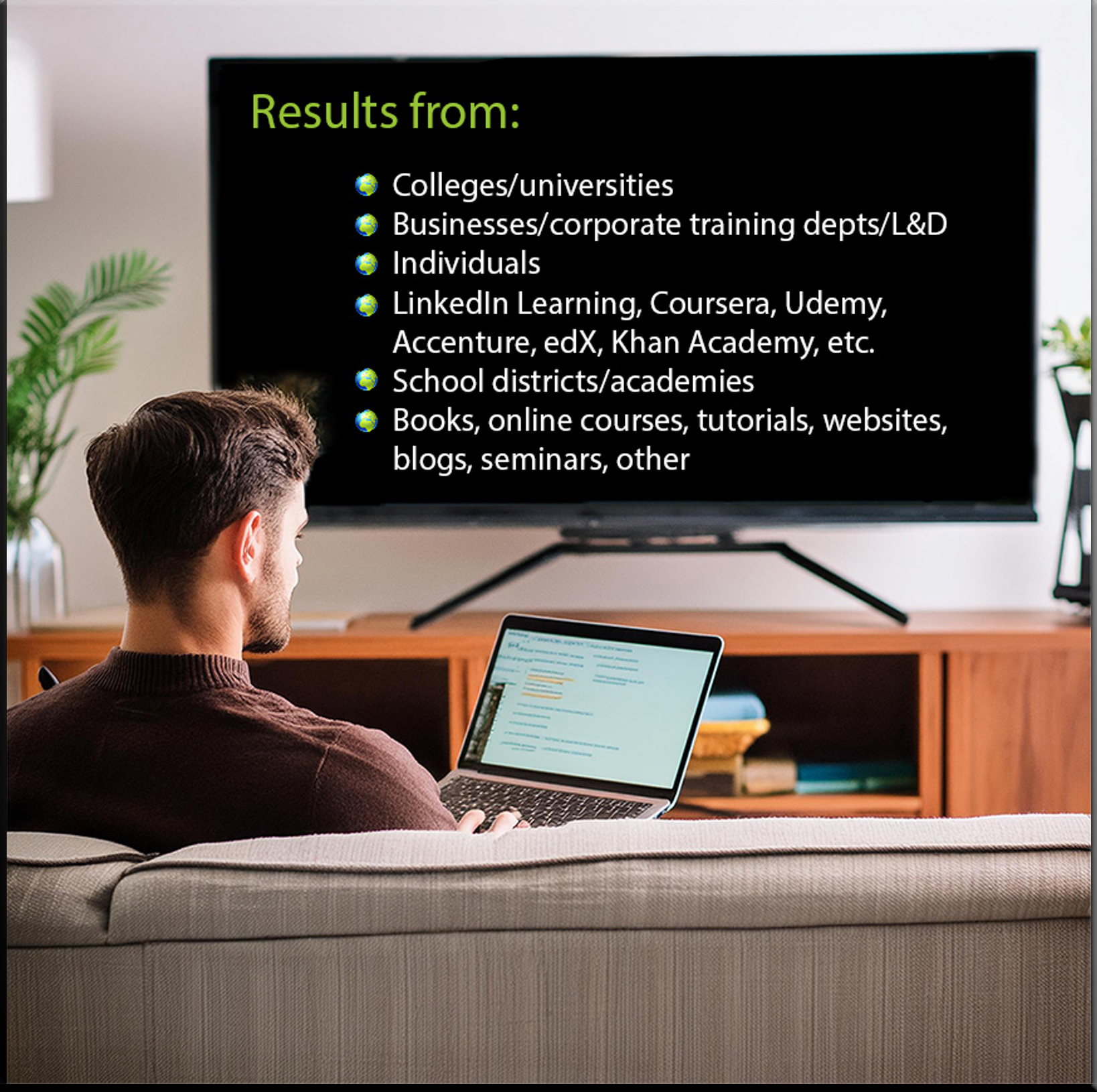
BUT PEOPLE are the key! Oftentimes, we need to — and prefer to — learn with others!


The Edtech Insiders Generative AI Map — from edtechinsiders.substack.com by Ben Kornell, Alex Sarlin, Sarah Morin, and Laurence Holt
A market map and database featuring 60+ use cases for GenAI in education and 300+ GenAI powered education tools.
A Student’s Guide to Writing with ChatGPT— from openai.com
Used thoughtfully, ChatGPT can be a powerful tool to help students develop skills of rigorous thinking and clear writing, assisting them in thinking through ideas, mastering complex concepts, and getting feedback on drafts.
There are also ways to use ChatGPT that are counterproductive to learning—like generating an essay instead of writing it oneself, which deprives students of the opportunity to practice, improve their skills, and grapple with the material.
For students committed to becoming better writers and thinkers, here are some ways to use ChatGPT to engage more deeply with the learning process.
Community Colleges Are Rolling Out AI Programs—With a Boost from Big Tech — from workshift.org by Colleen Connolly
The Big Idea: As employers increasingly seek out applicants with AI skills, community colleges are well-positioned to train up the workforce. Partnerships with tech companies, like the AI Incubator Network, are helping some colleges get the resources and funding they need to overhaul programs and create new AI-focused ones.
Along these lines also see:
Practical AI Training — from the-job.beehiiv.com by Paul Fain
Community colleges get help from Big Tech to prepare students for applied AI roles at smaller companies.
Miami Dade and other two-year colleges try to be nimble by offering training for AI-related jobs while focusing on local employers. Also, Intel’s business struggles while the two-year sector wonders if Republicans will cut funds for semiconductor production.
Can One AI Agent Do Everything? How To Redesign Jobs for AI? HR Expertise And A Big Future for L&D. — from joshbersin.com by Josh Bersin
Here’s the AI summary, which is pretty good.
In this conversation, Josh Bersin discusses the evolving landscape of AI platforms, particularly focusing on Microsoft’s positioning and the challenges of creating a universal AI agent. He delves into the complexities of government efficiency, emphasizing the institutional challenges faced in re-engineering government operations.
The conversation also highlights the automation of work tasks and the need for businesses to decompose job functions for better efficiency.
Bersin stresses the importance of expertise in HR, advocating for a shift towards full stack professionals who possess a broad understanding of various HR functions.
Finally, he addresses the impending disruption in Learning and Development (L&D) due to AI advancements, predicting a significant transformation in how L&D professionals will manage knowledge and skills.
The State of Instructional Design, 2024 — from by Dr. Philippa Hardman
Four initial results from a global survey I ran with Synthesia
In September, I partnered with Synthesia to conduct a comprehensive survey exploring the evolving landscape of instructional design.
Our timing was deliberate: as we witness the rapid advancement of AI and increasing pressure on learning teams to drive mass re-skilling and deliver more with less, we wanted to understand how the role of instructional designers is changing.
…
Our survey focused on five key areas that we believed would help surface the most important data about the transformation of our field:
-
- Roles & Responsibilities: who’s designing learning experiences in 2024?
- Success Metrics: how do you and the organisations you work for measure the value of instructional design?
- Workload & Workflow: how much time do we spend on different aspects of our job, and why?
- Challenges & Barriers: what sorts of obstacles prevent us from producing optimal work?
- Tools & Technology: what tools do we use, and is the tooling landscape changing?
A Code-Red Leadership Crisis: A Wake-Up Call for Talent Development — from learningguild.com by Dr. Arika Pierce Williams
This company’s experience offers three crucial lessons for other organizational leaders who may be contemplating cutting or reducing talent development investments in their 2025 budgets to focus on “growth.”
- Leadership development isn’t a luxury – it’s a strategic imperative…
- Succession planning must be an ongoing process, not a reactive measure…
- The cost of developing leaders is far less than the cost of not having them when you need them most…
Also from The Learning Guild, see:
5 Key EdTech Innovations to Watch — from learningguild.com by Paige Yousey
- AI-driven course design
- Hyper-personalized content curation
- Immersive scenario-based training
- Smart chatbots
- Wearable devices
“The Value of Doing Things: What AI Agents Mean for Teachers” — from nickpotkalitsky.substack.com by guest author Jason Gulya, Professor of English and Applied Media at Berkeley College in New York City
AI Agents make me nervous. Really nervous.
I wish they didn’t.
I wish I could write that the last two years have made me more confident, more self-assured that AI is here to augment workers rather than replace them.
But I can’t.
I wish I could write that I know where schools and colleges will end up. I wish I could say that AI Agents will help us get where we need to be.
But I can’t.
At this point, today, I’m at a loss. I’m not sure where the rise of AI agents will take us, in terms of how we work and learn. I’m in the question-asking part of my journey. I have few answers.
So, let’s talk about where (I think) AI Agents will take education. And who knows? Maybe as I write I’ll come up with something more concrete.
It’s worth a shot, right?
From DSC:
I completely agree with Jason’s following assertion:
A good portion of AI advancement will come down to employee replacement. And AI Agents push companies towards that.
THAT’s where/what the ROI will be for corporations. They will make their investments up in the headcount area, and likely in other areas as well (product design, marketing campaigns, engineering-related items, and more). But how much time it takes to get there is a big question mark.
One last quote here…it’s too good not to include:
Behind these questions lies a more abstract, more philosophical one: what is the relationship between thinking and doing in a world of AI Agents and other kinds of automation?
How Good are Claude, ChatGPT & Gemini at Instructional Design? — from drphilippahardman.substack.com by Dr Philippa Hardman
A test of AI’s Instruction Design skills in theory & in practice
By examining models across three AI families—Claude, ChatGPT, and Gemini—I’ve started to identify each model’s strengths, limitations, and typical pitfalls.
Spoiler: my findings underscore that until we have specialised, fine-tuned AI copilots for instructional design, we should be cautious about relying on general-purpose models and ensure expert oversight in all ID tasks.

From DSC — I’m going to (have Nick) say this again:
I simply asked my students to use AI to brainstorm their own learning objectives. No restrictions. No predetermined pathways. Just pure exploration. The results? Astonishing.Students began mapping out research directions I’d never considered. They created dialogue spaces with AI that looked more like intellectual partnerships than simple query-response patterns.
The Digital Literacy Quest: Become an AI Hero — from gamma.app
From DSC:
I have not gone through all of these online-based materials, but I like what they are trying to get at:
- Confidence with AI
Students gain practical skills and confidence in using AI tools effectively. - Ethical Navigation
Learn to navigate the ethical landscape of AI with integrity and responsibility. Make informed decisions about AI usage. - Mastering Essential Skills
Develop critical thinking and problem-solving skills in the context of AI.
Expanding access to the Gemini app for teen students in education — from workspaceupdates.googleblog.com
Google Workspace for Education admins can now turn on the Gemini app with added data protection as an additional service for their teen users (ages 13+ or the applicable age in your country) in the following languages and countries. With added data protection, chats are not reviewed by human reviewers or otherwise used to improve AI models. The Gemini app will be a core service in the coming weeks for Education Standard and Plus users, including teens,
5 Essential Questions Educators Have About AI — from edsurge.com by Annie Ning
Recently, I spoke with several teachers regarding their primary questions and reflections on using AI in teaching and learning. Their thought-provoking responses challenge us to consider not only what AI can do but what it means for meaningful and equitable learning environments. Keeping in mind these reflections, we can better understand how we move forward toward meaningful AI integration in education.
FrontierMath: A Benchmark for Evaluating Advanced Mathematical Reasoning in AI — from epoch.ai
FrontierMath presents hundreds of unpublished, expert-level mathematics problems that specialists spend days solving. It offers an ongoing measure of AI complex mathematical reasoning progress.
We’re introducing FrontierMath, a benchmark of hundreds of original, expert-crafted mathematics problems designed to evaluate advanced reasoning capabilities in AI systems. These problems span major branches of modern mathematics—from computational number theory to abstract algebraic geometry—and typically require hours or days for expert mathematicians to solve.
Rising demand for AI courses in UK universities shows 453% growth as students adapt to an AI-driven job market — from edtechinnovationhub.com
The demand for artificial intelligence courses in UK universities has surged dramatically over the past five years, with enrollments increasing by 453%, according to a recent study by Currys, a UK tech retailer.
The study, which analyzed UK university admissions data and surveyed current students and recent graduates, reveals how the growing influence of AI is shaping students’ educational choices and career paths.
This growth reflects the broader trend of AI integration across industries, creating new opportunities while transforming traditional roles. With AI’s influence on career prospects rising, students and graduates are increasingly drawn to AI-related courses to stay competitive in a rapidly changing job market.
AI Tutors Double Rates of Learning in Less Learning Time — by drphilippahardman.substack.com Dr. Philippa Hardman
Inside Harvard’s new groundbreaking study
Conclusion
This Harvard study provides robust evidence that AI tutoring, when thoughtfully designed, can significantly enhance learning outcomes. The combination of doubled learning gains, increased engagement, and reduced time to competency suggests we’re seeing just the beginning of AI’s potential in education and that its potential is significant.
If this data is anything to go by, and if we – as humans – are open and willing to acting on it, it’s possible AI will have a significant and for some deeply positive impact on how we design and deliver learning experiences.
That said, as we look forward, the question shouldn’t just be, “how AI can enhance current educational methods?”, but also “how it might AI transform the very nature of learning itself?”. With continued research and careful implementation, we could be moving toward an era of education that’s more effective but also more accessible than ever before.
Three Quick Examples of Teaching with and about Generative AI — from derekbruff.org Derek Bruff
- Text-to-Podcast.
- Assigning Students to Groups.
- AI Acceptable Use Scale.
Also from Derek’s blog, see:
- Three Recent Studies on Student Learning with Generative AI
- How Do We Define Quality Student Work in an Age of AI?
From Mike Sharples on LinkedIn:
ChatGPT’s free voice wizard — from wondertools.substack.com by Jeremy Caplan
How and why to try the new Advanced Voice Mode
7 surprisingly practical ways to use voice AI
Opening up ChatGPT’s Advanced Voice Mode (AVM) is like conjuring a tutor eager to help with whatever simple — or crazy — query you throw at it. Talking is more fluid and engaging than typing, especially if you’re out and about. It’s not a substitute for human expertise, but AVM provides valuable machine intelligence.
- Get a virtual museum tour. …
- Chat with historical figures….
- Practice languages. …
- Explore books. …
- Others…
Though not AI-related, this is along the lines of edtech:
- MoodleMoot Global 24 Conference Notes — from onedtech.philhillaa.com by Glenda Morgan
A first look at Moodle under new leadership
Here’s the link to access it: https://t.co/kHq0S2r4aD
It’s only available in the US at the moment, but it works with a VPN.
Truly the best tool for learning a new subject I’ve tried so far.
— Paul Couvert (@itsPaulAi) October 31, 2024
…which links to:
10 ChatGPT prompts to extract everything from a book: pic.twitter.com/zzn4NrWu4l
— Farhan (@mhdfaran) October 12, 2024
Articulate AI & the “Buttonification” of Instructional Design — from drphilippahardman.substack.com by Dr. Philippa Hardman
A new trend in AI-UX, and its implications for Instructional Design
1. Using AI to Scale Exceptional Instructional Design Practice
Imagine a bonification system that doesn’t just automate tasks, but scales best practices in instructional design:
- Evidence-Based Design Button…
- Learner-Centered Objectives Generator…
Engagement Optimiser…
2. Surfacing AI’s Instructional Design Thinking
Instead of hiding AI’s decision-making process, what if we built an AI system which invites instructional designers to probe, question, and learn from an expert trained AI?
- Explain This Design…
- Show Me Alternatives…
- Challenge My Assumptions…
- Learning Science Insights…
By reimagining the role of AI in this way, we would…
Recapping OpenAI’s Education Forum — from marcwatkins.substack.com by Marc Watkins
OpenAI’s Education Forum was eye-opening for a number of reasons, but the one that stood out the most was Leah Belsky acknowledging what many of us in education had known for nearly two years—the majority of the active weekly users of ChatGPT are students. OpenAI has internal analytics that track upticks in usage during the fall and then drops off in the spring. Later that evening, OpenAI’s new CFO, Sarah Friar, further drove the point home with an anecdote about usage in the Philippines jumping nearly 90% at the start of the school year.
I had hoped to gain greater insight into OpenAI’s business model and how it related to education, but the Forum left me with more questions than answers. What app has the majority of users active 8 to 9 months out of the year and dormant for the holidays and summer breaks? What business model gives away free access and only converts 1 out of every 20-25 users to paid users? These were the initial thoughts that I hoped the Forum would address. But those questions, along with some deeper and arguably more critical ones, were skimmed over to drive home the main message of the Forum—Universities have to rapidly adopt AI and become AI-enabled institutions.
Off-Loading in the Age of Generative AI — from insidehighered.com by James DeVaney
As we embrace these technologies, we must also consider the experiences we need to discover and maintain our connections—and our humanity. In a world increasingly shaped by AI, I find myself asking: What are the experiences that define us, and how do they influence the relationships we build, both professionally and personally?
This concept of “off-loading” has become central to my thinking. In simple terms, off-loading is the act of delegating tasks to AI that we would otherwise do ourselves. As AI systems advance, we’re increasingly confronted with a question: Which tasks should we off-load to AI?
How to do school with NotebookLM:
1. Record audio from class on your phone
2. Keep laptop closed. Just jot down short phrases to describe most important points
3. Upload audio and PDF scan of notes to NotebookLM
4. Ask Notebook to expand your notes with details from recording… pic.twitter.com/wfmCTJfRba— Steven Johnson (@stevenbjohnson) September 26, 2024
Unlock deeper insights with NotebookLM: Now analyze YouTube videos & audio files alongside your docs. Plus, easily share your Audio Overview with a new sharing option!
Learn more: https://t.co/j1da9565aZ pic.twitter.com/9sULXX5Jud
— labs.google (@labsdotgoogle) September 26, 2024
According to Notebook LM on this Future U podcast — Searching for Fit: The Impacts of AI in Higher Ed — here are some excerpts from the generated table of contents:
Part 1: Setting the Stage
I. Introduction (0:00 – 6:16): …
II. Historical Contextualization (6:16 – 11:30): …
III. The Role of Product Fit in AI’s Impact (11:30 – 17:10): …
IV. AI and the Future of Knowledge Work (17:10 – 24:03): …
V. Teaching About AI in Higher Ed: A Measured Approach (24:03 – 34:20): …
VI. AI & the Evolving Skills Landscape (34:20 – 44:35): …
VII. Ethical & Pedagogical Considerations in an AI-Driven World (44:35 – 54:03):…
VIII. AI Beyond the Classroom: Administrative Applications & the Need for Intuition (54:03 – 1:04:30): …
IX. Reflections & Future Directions (1:04:30 – 1:11:15): ….
Part 2: Administrative Impacts & Looking Ahead
X. Bridging the Conversation: From Classroom to Administration (1:11:15 – 1:16:45): …
XI. The Administrative Potential of AI: A Looming Transformation (1:16:45 – 1:24:42): …
XII. The Need for Intuitiveness & the Importance of Real-World Applications (1:24:42 – 1:29:45): …
XIII. Looking Ahead: From Hype to Impactful Integration (1:29:45 – 1:34:25): …
XIV. Conclusion and Call to Action (1:34:25 – 1:36:03): …
The future of language learning — from medium.com by Sami Tatar
Most language learners do not have access to affordable 1:1 tutoring, which is also proven to be the most effective way to learn (short of moving to a specific country for complete immersion). Meanwhile, language learning is a huge market, and with an estimated 60% of this still dominated by “offline” solutions, meaning it is prime for disruption and never more so than with the opportunities unlocked through AI powered language learning. Therefore — we believe this presents huge opportunities for new startups creating AI native products to create the next language learning unicorns.
I never imagined I’d learn so much without paying for a course.
Here are 8 ChatGPT-4 prompts I wish I’d found sooner: pic.twitter.com/b9gqEGInSd
— Ryan Hart ? (@thisdudelikesAI) October 5, 2024
“The Broken Mirror: Rethinking Education, AI, and Equity in America’s Classrooms” — from nickpotkalitsky.substack.com by JC Price
It’s not that AI is inherently biased, but in its current state, it favors those who can afford it. The wealthy districts continue to pull ahead, leaving schools without resources further behind. Students in these underserved areas aren’t just being deprived of technology—they’re being deprived of the future.
But imagine a different world—one where AI doesn’t deepen the divide, but helps to bridge it. Technology doesn’t have to be the luxury of the wealthy. It can be a tool for every student, designed to meet them where they are. Adaptive AI systems, integrated into schools regardless of their budget, can provide personalized learning experiences that help students catch up and push forward, all while respecting the limits of their current infrastructure. This is where AI’s true potential lies—not in widening the gap, but in leveling the field.
But imagine if, instead of replacing teachers, AI helped to support them. Picture a world where teachers are freed from the administrative burdens that weigh them down. Where AI systems handle the logistics, so teachers can focus on what they do best—teaching, mentoring, and inspiring the next generation. Professional development could be personalized, helping teachers integrate AI into their classrooms in ways that enhance their teaching, without adding to their workload. This is the future we should be striving toward—one where technology serves to lift up educators, not push them out.
Duolingo Introduces AI-Powered Innovations at Duocon 2024 — from investors.duolingo.com; via Claire Zau
Duolingo’s new Video Call feature represents a leap forward in language practice for learners. This AI-powered tool allows Duolingo Max subscribers to engage in spontaneous, realistic conversations with Lily, one of Duolingo’s most popular characters. The technology behind Video Call is designed to simulate natural dialogue and provides a personalized, interactive practice environment. Even beginner learners can converse in a low-pressure environment because Video Call is designed to adapt to their skill level. By offering learners the opportunity to converse in real-time, Video Call builds the confidence needed to communicate effectively in real-world situations. Video Call is available for Duolingo Max subscribers learning English, Spanish, and French.
And here’s another AI-based learning item:
AI reading coach startup Ello now lets kids create their own stories — from techcrunch.com by Lauren Forristal; via Claire Zau
Ello, the AI reading companion that aims to support kids struggling to read, launched a new product on Monday that allows kids to participate in the story-creation process.
Called “Storytime,” the new AI-powered feature helps kids generate personalized stories by picking from a selection of settings, characters, and plots. For instance, a story about a hamster named Greg who performed in a talent show in outer space.
Voice and Trust in Autonomous Learning Experiences — from learningguild.com by Bill Brandon
This article seeks to apply some lessons from brand management to learning design at a high level. Throughout the rest of this article, it is essential to remember that the context is an autonomous, interactive learning experience. The experience is created adaptively by Gen AI or (soon enough) by agents, not by rigid scripts. It may be that an AI will choose to present prewritten texts or prerecorded videos from a content library according to the human users’ responses or questions. Still, the overall experience will be different for each user. It will be more like a conversation than a book.
…
In summary, while AI chatbots have the potential to enhance learning experiences, their acceptance and effectiveness depend on several factors, including perceived usefulness, ease of use, trust, relational factors, perceived risk, and enjoyment.Personalization and building trust are essential for maintaining user engagement and achieving positive learning outcomes. The right “voice” for autonomous AI or a chatbot can enhance trust by making interactions more personal, consistent, and empathetic.
Walt Disney’s Wisdom: Lessons for Learning & Development Leaders — from learningguild.com by David Kelly
Here are a few of my favorite [quotes], along with the valuable lessons they offer us in Learning and Development.
- “Everyone has deadlines.”
- “I believe in being an innovator.”
- “Times and conditions change so rapidly that we must keep our aim constantly focused on the future.
- “I can never stand still. I must explore and experiment.”
- …and several other quotes.










